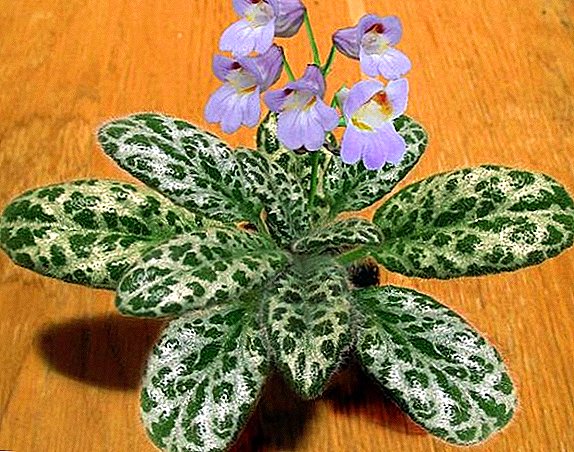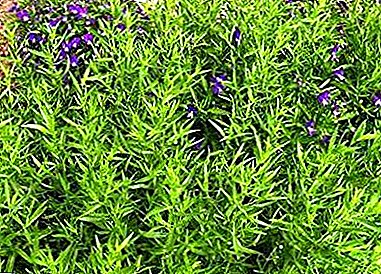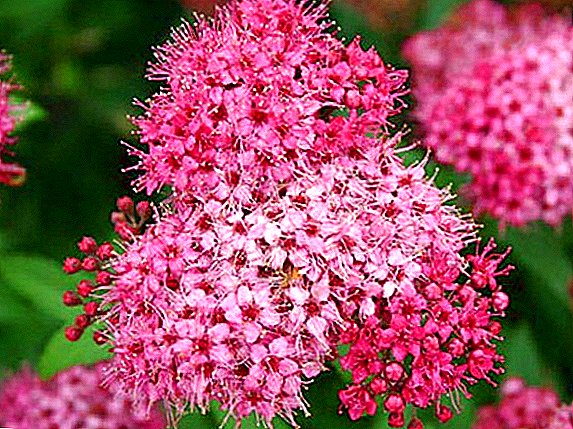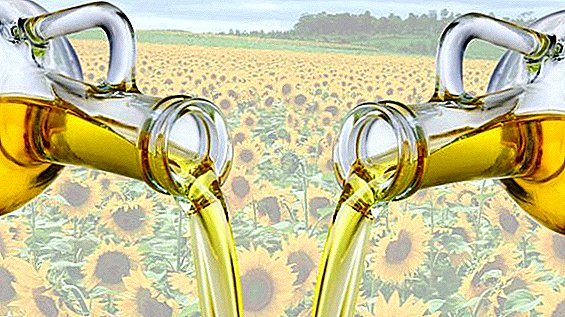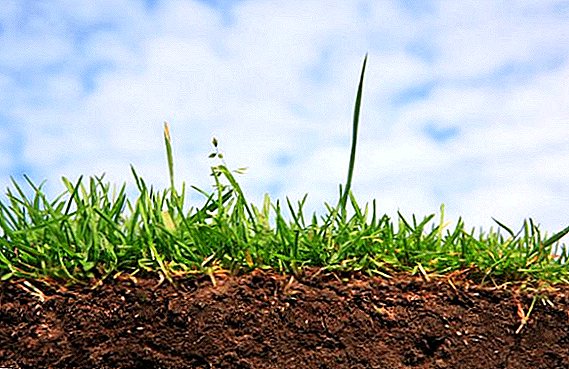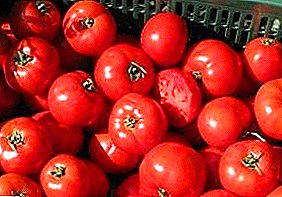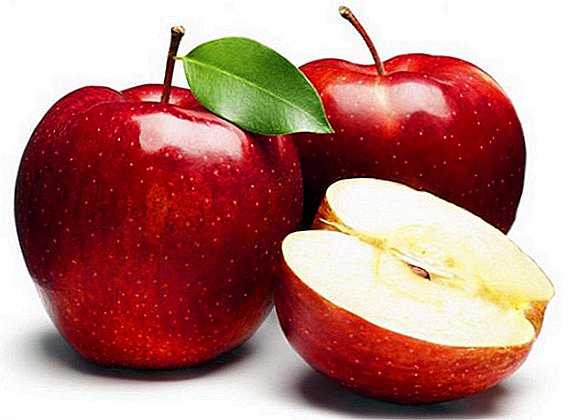 Apples - one of the most common and affordable types of fruit on the shelves of domestic stores and markets. They are quite different in taste and size, and the dishes that are made from them are worthy of a separate cookbook. After all, a tasty and juicy fruit can not only be eaten raw, but also prepare all kinds of jams, pies, bake in the oven, dry and much more. One of the most original recipes for the preparation of this fruit are pickled apples - An interesting dish, the features of which we consider in this article.
Apples - one of the most common and affordable types of fruit on the shelves of domestic stores and markets. They are quite different in taste and size, and the dishes that are made from them are worthy of a separate cookbook. After all, a tasty and juicy fruit can not only be eaten raw, but also prepare all kinds of jams, pies, bake in the oven, dry and much more. One of the most original recipes for the preparation of this fruit are pickled apples - An interesting dish, the features of which we consider in this article.
The chemical composition of apples
The composition of apples prepared in this way may differ significantly. It depends on many factors, such as:
- Variety and degree of maturity of the fruit.
- Growing conditions and storage.
- Duration of storage.
- Cooking method.
 But they all have the characteristic components of this dish:
But they all have the characteristic components of this dish:- high content of sugars (first of all, fructose);
- organic acids (malic, citric);
- tannic, nitrogenous and pectic substances;
- A variety of vitamin complex: A, C, E, PP, P and B vitamins.
Despite such a rich composition, their caloric content is only 47 kcal per 100 g of product. This allows them to form part of various diets.
Did you know? Baked apples became especially popular in the time of Peter the Great, who established the Garden Office. She was engaged in the import of new varieties of apples and the increase in the volume of cultivation of existing ones.
Beneficial features
There are many ways to process fruits and vegetables for long-term storage, and each one takes away some of the beneficial properties of the raw product. But soaked apples are considered one of the most successful ways of harvesting this fruit, because in the process they retain a large number of healthy qualities of fresh fruit and acquire new equally important properties:
- normalize the intestinal microflora, saturating the body with lactic acid bacteria;
- enrich the body with calcium, reduce the fragility of inert tissues;
- improve the condition of hair and teeth;
- increase tissue elasticity;
- have a positive effect on the hormonal system;
- The presence of ascorbic acid (it is more in its roasted apples than in fresh ones) strengthens the immune system.
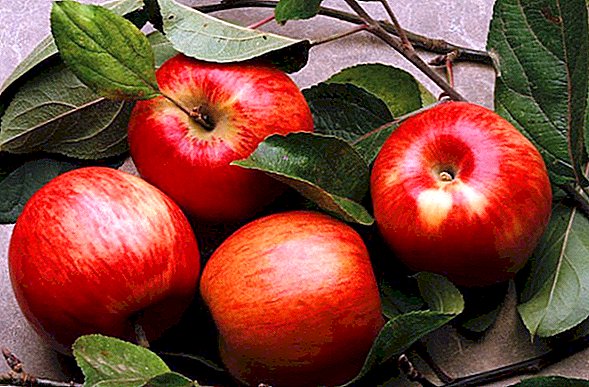 It can be said that such winter preparations affect many systems of the human body, providing a general strengthening effect and saturating the body with energy.
It can be said that such winter preparations affect many systems of the human body, providing a general strengthening effect and saturating the body with energy.The duration of the soaking process
The process of soaking will require some patience, because, on average, it takes 40-50 days to complete (not counting the preparatory work). But with all the rules, such a treat can be stored for a long time, until the new harvest.
What apples to choose for soaking
On the market and in stores represented a huge variety of varieties of this fruit. But not all of them are suitable for soaking. The most suitable are late varieties (autumn or autumn-winter). Fruits must be ripe and firm. Some gourmets prefer to take slightly not ripened, but this is a matter of taste. The best grade is considered Antonovka.
But also such varieties will do:
- "Pippin";
- "Anise";
- "Slav";
- Titovka;
- "Bottle";
- White filling;
- "Papirovka".

Important! The absence of any defects on the fruit is very important, because one spoiled apple can spoil all the others.
It is better to choose fruits of approximately the same size, so they will be ready in one term.
The process of preparing apples and leaves
The preparatory stage is very important, because the final result directly depends on this stage.
Before steeping the fruit, it is advisable to rest for 15–20 days (especially if the varieties are more solid, for example, Antonovka or Slav). The product, prepared from properly seasoned fruits, is obtained evenly soaked in brine, juicy, soft, has a rich refreshing taste and golden color. After the fruits have matured, they should be thoroughly rinsed with running water.
You do not need to tear off the stems, and it is better to clean the leaves. Leaves, branches, straw and all possible additives must be cleaned of excess garbage and washed. 
Washing soda cans
When urinating in cans it is worth remembering that the containers should be cleaned beforehand. It is necessary to wash soda. The use of any chemical detergents is strictly not recommended. After the jar has been thoroughly cleaned and there are no traces of soda left on it, it must be sterilized or boiled over with boiling water.
Storage conditions
The first stage of storage (immediately after preparation) lasts about 1 week. This time the soaked fruit should be stored at room temperature.
After harvesting, it is necessary to move to a cool place (preferably a basement or a cellar), where they must stand for 30-45 days (depending on the type of fruit). In the same room, and they should be stored all winter.
Important! It is advisable not to freeze-soaked apples. Although it is believed that they do not lose their useful qualities, but their structure and appearance significantly deteriorate when frozen.
A simple recipe for peeled apples Antonovka in banks
A very fast and convenient way, since every hostess has banks in the arsenal, and the finished product is convenient to store, because such dishes do not take much space in the house.
Ingredients
- Antonovka apples - 10 kg.
- Water - 5 liters.
- Salt - 2 tbsp. spoons.
- Sugar - Art. spoons.
- Leaves of raspberry, currant and cherry.
Cooking method
In order to get a tasty treat, you need to perform several simple steps:
- Thoroughly rinse the fruit with running water or in several different containers.
- Pure fruits cut into pieces: large - 6-8 parts, and smaller ones can be into 4 parts. If you choose a medium-sized variety, then it is quite possible to use whole fruits.
- Pre-prepared glass jars to cover with leaves of raspberry, currant and cherry (previously thoroughly washed).
- Put the sliced pulp (or whole fruits) in jars without tamping.
- Add salt and sugar to the water, put on the fire and bring to a boil. After remove from heat and set aside.
- Pour the contents of the cans with hot pickle so that it reaches the neck.
- Cover the containers with capron caps and put them in the cold, where they will be boiled for 2-3 weeks. It is possible to store, as well as other preparations, all winter.

Check out the best recipes for harvesting apples for the winter.
Soaked apples for the winter with rye flour
Another quick and easy recipe for no less delicious apples.
Ingredients
- Apples - 1.5 kg.
- Water - 2 liters.
- Rye flour - 2 tbsp. spoons.
- Salt - 1 tbsp. spoon.
- Sugar - 4 tbsp. spoons.
- Mint and currant leaves.
Cooking method
Preparation is carried out in several stages:
- Well-washed fruit must be wiped dry.
- In the pre-prepared glass jars, fold half the leaves of mint and currants (you can add other favorite herbs). Various leaves are also desirable after washing to dry with a towel.
- Tightly, but without squeezing, put the fruit in a jar.
- Cover with the remaining herbs.
- Mix salt, sugar and rye flour in water. Stir until everything is dissolved.
- Pour the jars to the top (the remaining brine is stored in the refrigerator).
- Store containers in a warm place for 3-7 days.
- When the fruit has absorbed some of the liquid, add more brine.
- Move to a cool place where apples for 30-45 days will reach readiness.

Cooking pickled apples in a bucket
This method will help to make a large number of blanks without much difficulty, without having special dishes, like barrels.
Ingredients
- Apples - 1 bucket.
- Water - 1 bucket.
- Salt - 9 tbsp. spoons.
- Sugar - 9 tbsp. spoons.
- Leaves of raspberry and currant.
Did you know? Such big gourmets like the French love the dishes of the national Russian cuisine - the association Farms Farms purchases various exotic products for them, including dusted apples.
Cooking method
Cooking technology is very simple:
- Wash the fruit and leaves and dry to a towel.
- Lay the bottom of a bucket (pre-washed and scalded with boiling water) with leaves of raspberry and currant.
- Tamp the fruit tightly up (the space between the fruits can also be laid with leaves or your favorite aromatic herbs).
- Bring water to a boil and dissolve salt and sugar in it.
- Fill the bucket with brine - it should completely cover the contents.
- Cover the bucket with gauze or a towel and store in a cool place. There it should stay 2-3 weeks.
- As soon as the flesh is salted (from time to time it is necessary to get and try), the fruit can be spread out on sterilized jars, pour in brine and, covered with lids, put away for storage in the refrigerator. Or leave everything stored in a bucket in a cool and dark place.

Cooking pickled apples in a barrel
This recipe is considered a classic and traditional. Its ingredients and cooking technology tested by many generations of hostesses. It is wooden packaging that creates an unusual taste that is difficult to repeat in another container.
Ingredients
- Apples - 10 kg.
- Water - 10 liters.
- Sugar - 400 g;
- Salt - 3 tbsp. spoons.
- Mustard powder - 1 tbsp. spoon.
- Wheat or rye straw.
- Mint leaves, currants, raspberries.
- Spices to taste (for example, cinnamon, pepper, basil).
Learn more about harvesting for the winter: pears, dogwoods, apricots, yoshta, gooseberries, viburnum, blueberries, cherries, mountain ash and sea buckthorn.
Cooking method
To get fragrant preparations for the winter you need:
- Wash the fruits, leaves and straw (additionally scald the straw with boiling water), then let it dry.
- Put the straw and leaves on the bottom of the prepared dishes (rinse with soda solution and scald, check for the presence of chips and cracks).
- Applying apples should be cuttings up, each layer paving straw and leaves. Also straw need to lay the space between the fruits and the walls of the barrel.
- Carefully cover the last layer with the remaining straw and leaves.
- Mix sugar, salt, dry mustard, spices and water. Bring to a boil and cool.
- Pour brine over the barrel so that all fruits are covered and slightly higher. The remaining brine is preserved (it will be needed after some time).
- Capacity to close or press on top and leave in a warm place for 3-5 days. During this period, you need to regularly add brine, as the apples will pull a lot of liquid.
- Clean in a cool and dark place where the fruit will reach another 30-40 days. During this period it is necessary to regularly check whether mold has appeared on the surface. If so, then it must be carefully removed and continued observation.
 This simple and inexpensive way to diversify your diet in the cold season. Soaked apples - this is a useful addition to your table in the winter, when fresh fruits and vegetables are difficult and expensive. Just a little time and effort, and the result will delight you and your loved ones.
This simple and inexpensive way to diversify your diet in the cold season. Soaked apples - this is a useful addition to your table in the winter, when fresh fruits and vegetables are difficult and expensive. Just a little time and effort, and the result will delight you and your loved ones.

